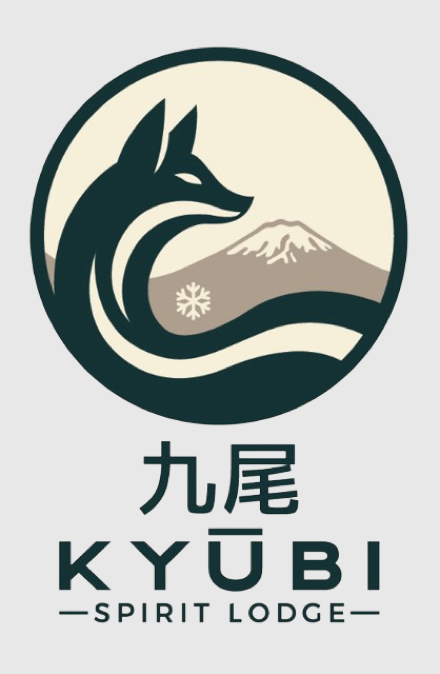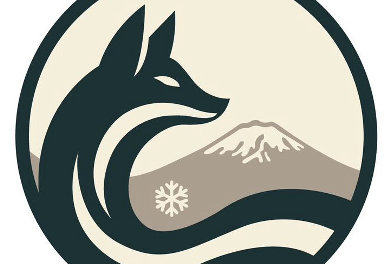
Join us on an exciting journey through Japan from A to Z, where we answer 25 frequently asked questions about the Land of the Rising Sun, with over 1,000 monthly searches. In this article, we'll guide you from the basics to intriguing secrets, from Japan's rich culture to its breathtaking tourist destinations, helping you gain a deeper understanding of this mythical land. Immerse yourself in detailed stories and insights, and you'll not only expand your knowledge but also experience the beauty and allure of Japan through a whole new lens.
1. Japan from A to Z: How big is Japan?
Japan’s total area is approximately 377,975 square kilometers, making it the 62nd largest country in the world by land area. The country comprises five main islands – Honshu, Hokkaido, Kyushu, Shikoku, and Okinawa – along with over 6,852 smaller islands. Its diverse landscape includes mountains, forests, and coastal regions, offering a variety of natural environments and scenic views.
2. Japan from A to Z: How many people live in Japan? / What is the population of Japan?

As of September 3, 2024, Japan's population is around 122,513,477. Japan accounts for about 1.51% of the world's population and ranks 11th in terms of population size. Despite its large population, Japan faces challenges related to an aging population and declining birth rates, significantly impacting its economy and social services. The population is concentrated in urban areas, with Tokyo being the most populous city, hosting over 37 million people in its greater metropolitan area.
3. Japan from A to Z: Is Japan an island nation?

Yes, Japan is an island nation located in East Asia. Situated in the Pacific Ocean, Japan lies to the east of the Korean Peninsula and China. The country consists of 6,852 islands, with the five largest – Honshu, Hokkaido, Kyushu, Shikoku, and Okinawa – making up the bulk of its land area. Japan’s island geography has played a significant role in shaping its culture, economy, and history, contributing to its unique identity and rich maritime heritage.
4. Japan from A to Z: Is Japan in Asia?
Yes, Japan is located in Asia. Situated in the northeastern part of the continent, Japan is part of the region known as East Asia, alongside countries like China, South Korea, and Taiwan. Its strategic location has made Japan a cultural and economic hub in the region. Japan’s position along the Pacific Rim has also been crucial in its development as a global maritime power.
5. Japan from A to Z: What is the capital of Japan?
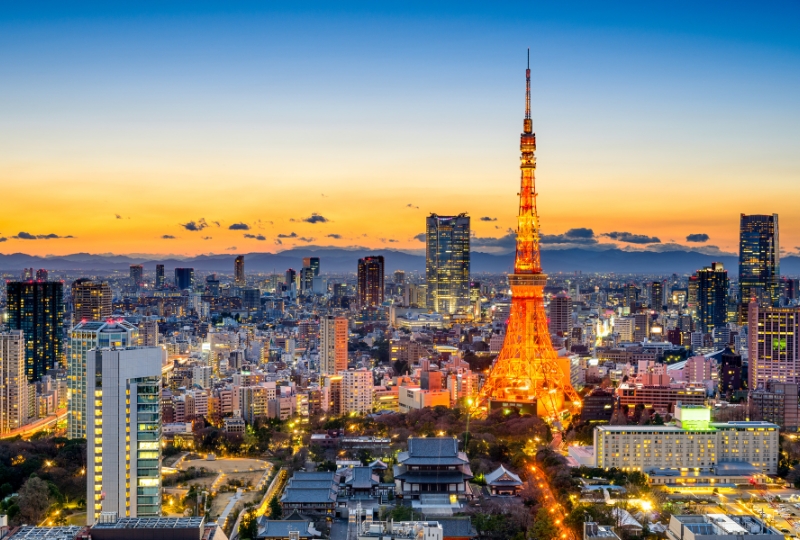
Tokyo is the capital of Japan. As the political, economic, and cultural center of Japan, Tokyo is one of the most populous and vibrant cities in the world. The city is renowned for its modern skyscrapers, historic temples, and bustling neighborhoods such as Shibuya and Shinjuku. Tokyo is also the hub of Japan’s transportation network, connecting the country through extensive rail and air services. In addition, Tokyo hosts numerous international events and is home to many of the world’s leading museums, universities, and companies.
6. Japan from A to Z: What religion is in Japan?
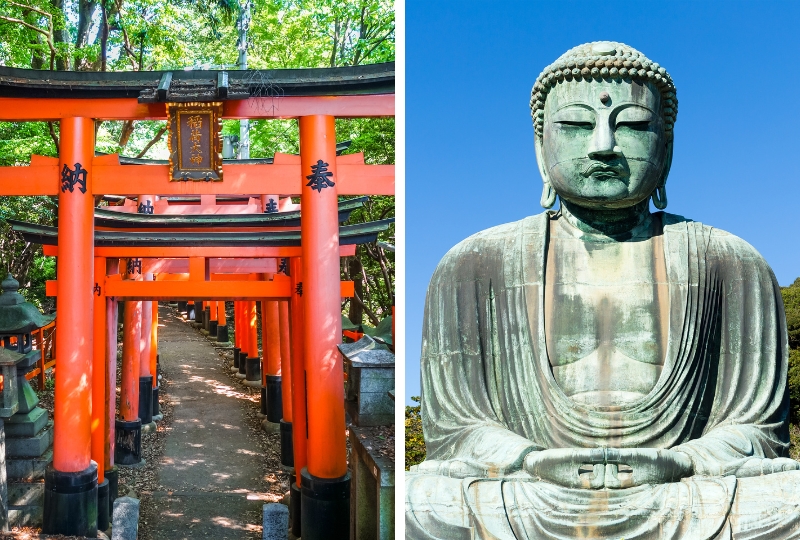
Shinto and Buddhism are the two main religions practiced in Japan. Shinto, an indigenous belief system, centers around the worship of kami (spirits) and rituals that connect people with nature and ancestral spirits. Buddhism, introduced in China and Korea in the 6th century, has deeply influenced Japanese culture, art, and philosophy. Many Japanese practice a combination of both religions, attending Shinto ceremonies for life events such as births and marriages, while turning to Buddhism for death and afterlife rituals. These peaceful religions shape Japan’s spiritual and cultural landscape.
7. Japan from A to Z: Is there a stand-up comedy in Japan?

Stand-up comedy is popular in Japan, known as “manzai” or “rakugo.” Manzai is a traditional Japanese comedic form, usually featuring a duo exchanging rapid-fire jokes and puns, often based on misunderstandings or wordplay. Rakugo is a solo performance where a storyteller sits on stage and recounts humorous tales, using minimal props and relying on voice and body language to portray different characters. Both forms of comedy are deeply embedded in Japanese culture and continue to entertain audiences nationwide.
8. Where is Mt Fuji in Japan?

Mount Fuji is located on the island of Honshu, southwest of Tokyo. As Japan's tallest mountain, standing at 3,776 meters, Mount Fuji is a prominent symbol of the country. It is a stratovolcano that last erupted in 1707, and its near-perfect conical shape has made it a frequent subject in Japanese art and photography. The mountain is a UNESCO World Heritage site and a popular destination for climbers and tourists, especially during the official climbing season in July and August. Its proximity to Tokyo makes it easily accessible for day trips, offering breathtaking views and a profound cultural experience.
9. Is Japan a safe country?
Japan is considered one of the safest countries in the world. With low crime rates and high standards of public safety, Japan is known for its security and peace of mind. The country's police force is highly organized, strict gun control laws are in place, and social order is well-maintained.
Japan also has highly effective disaster preparedness measures, including early warning systems, earthquake-resistant building codes, and public education programs on how to respond to emergencies. Buildings are designed to withstand large earthquakes, and citizens regularly participate in disaster drills. These factors make Japan a popular destination for travelers and a reassuring place for residents.
10. What is the drinking age in Japan?
The legal drinking age in Japan is 20 years old. This law applies to the consumption of alcohol in public places, including bars, restaurants, and retail establishments. The legal age is strictly enforced, with establishments required to verify customers' age through identification. This regulation reflects Japan's cultural norms and aims to encourage responsible drinking among young adults.
11. When is Japan's Sakura season?
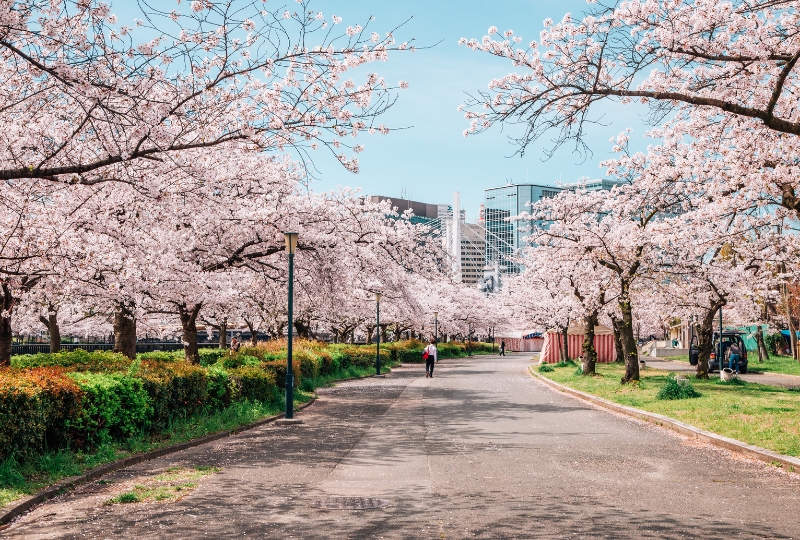
The cherry blossom season, also known as Sakura season, usually occurs from late March to early April. During this time, Japan transforms into a beautiful scene with a stunning display of blooming cherry blossoms. This season is celebrated nationwide with festivals, picnics under the blossoming trees, and various cultural events. The blooming time can vary slightly by region, with flowers often blooming earlier in southern Japan compared to northern areas. The fleeting beauty of the sakura is cherished as a symbol of life.
Read more: When is the best time to travel to Japan?
12. How much is a flight to Japan?

Flight prices to Japan vary depending on the departure location and time of booking. Factors such as the distance from the departure city, the choice of airline, travel season, and booking timing can significantly impact the cost.
For example, flights from major hubs like New York or London can be more expensive than those from nearby cities in Asia. Booking in advance, choosing off-peak travel times, and comparing different airlines can help find more affordable options. Additionally, flexibility with travel dates and routes can also affect prices.
13. How much is a trip to Japan?
The cost of a trip to Japan depends on factors such as length of stay, accommodation, and planned activities. Expenses can vary greatly depending on how long you stay, the type of lodging (ranging from budget hostels to luxury hotels), and the activities you intend to participate in (such as sightseeing tours, culinary experiences, and entertainment). Other factors include transportation within Japan, such as the Japan Rail Pass or local public transportation, as well as personal spending habits. Planning and budgeting for these elements can help you manage overall costs and ensure a memorable trip within your budget.
14. Is Japan expensive?
Japan can be relatively expensive compared to some other countries, but there are affordable options available. While Japan is known for its high cost of living and expensive goods and services, you can manage costs by opting for budget-friendly alternatives. These include staying in hostels or capsule hotels, eating at inexpensive eateries or convenience stores, and using discount transportation passes. Additionally, Japan offers a wide range of free or low-cost attractions, such as public parks and temples, providing rich experiences without breaking the bank.
15. When does the sun rise in Japan in October?
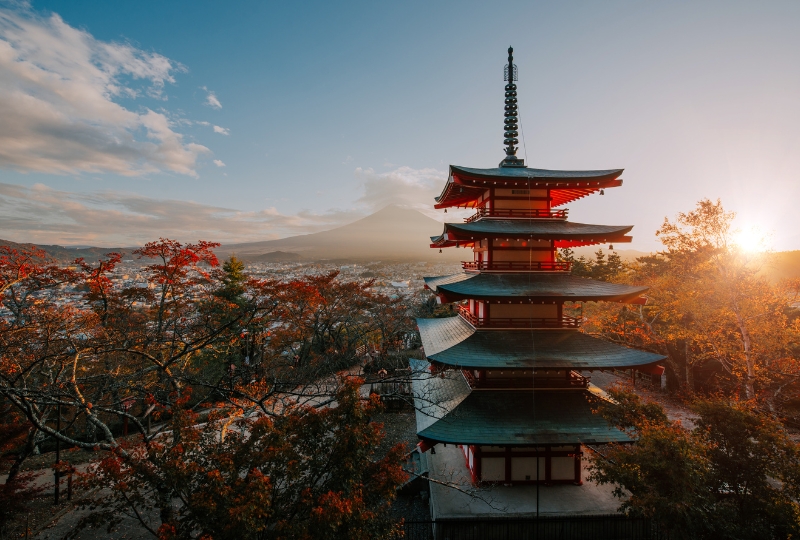
In October, sunrise times in Japan vary by location but typically occur between 5:30 and 6:30 a.m. The specific time can differ depending on whether you're in the northern or southern part of the country. In northern areas like Hokkaido, the sun may rise slightly later, while in southern regions like Okinawa, it may rise a bit earlier. This variation is due to Japan's wide latitudinal range, which affects sunrise times throughout the month.
16. Does Japan still have an emperor?
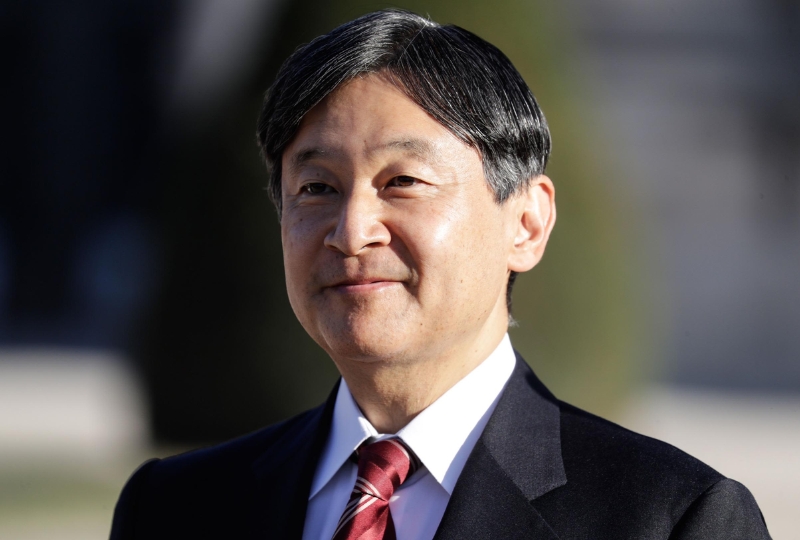
Yes, Japan still has an emperor. The current emperor is Emperor Naruhito. He ascended the throne on May 1, 2019, following the abdication of his father, Emperor Akihito. Japan's imperial family, known as the Chrysanthemum Throne, symbolizes the nation's continuity and tradition, although the role is largely ceremonial with no political power. Emperor Naruhito and Empress Masako perform various ceremonial duties and represent Japan at official functions both domestically and internationally.
17. How many islands are in Japan?
Japan consists of 6,852 islands, but its five main islands are Honshu, Hokkaido, Kyushu, Shikoku, and Okinawa. These five islands make up the majority of Japan’s land area and host most of its population and major cities. Honshu is the largest and most populous island, home to cities like Tokyo and Kyoto. Hokkaido is known for its natural beauty and cooler climate. Kyushu offers diverse landscapes and cultural heritage, while Shikoku is famous for pilgrimage routes and scenic beauty. Okinawa is a southern archipelago known for its beautiful beaches, subtropical climate, and the unique culture of the former Ryukyu Kingdom. It's also a popular destination for diving and enjoying local cuisine like Okinawa soba and awamori liquor. Smaller islands contribute to Japan’s diverse geography and rich culture.
18. What is the currency of Japan?
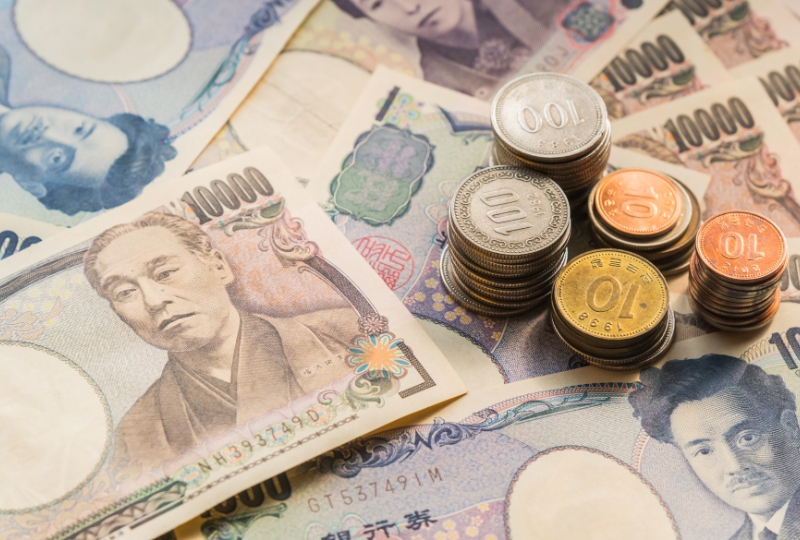
Japan's currency is the Japanese yen (JPY). The yen is represented by the symbol "¥" and is subdivided into 100 sen, though sen is rarely used in daily transactions. The yen is one of the most traded currencies globally and is widely used in international commerce and finance. It comes in various denominations of banknotes and coins and is accepted throughout Japan for all types of transactions.
19. When is Golden Week in Japan?
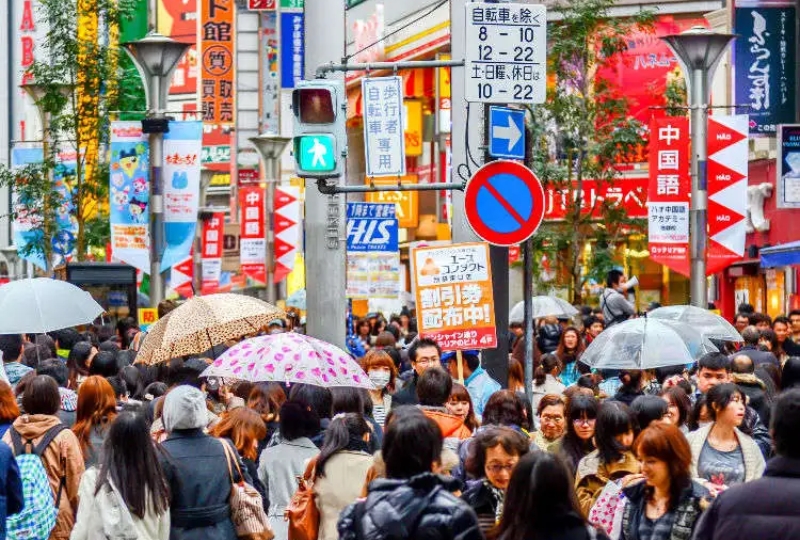
Golden Week in Japan is a series of national holidays from late April to early May. This major holiday period includes several important days: Showa Day (April 29), Constitution Memorial Day (May 3), Greenery Day (May 4), and Children's Day (May 5). It is one of the busiest travel seasons in Japan, with many people taking time off to travel, visit family, or participate in various festivals and events. Public transportation and popular tourist destinations are often crowded, making this a lively but sometimes hectic time to visit Japan.
20. How long is the flight to Japan?
The flight duration to Japan varies depending on the departure location but generally ranges from 8 to 14 hours. For example, flights from major cities on the U.S. West Coast, like Los Angeles or San Francisco, typically take about 11 to 12 hours. Flights from the East Coast, such as New York or Boston, can take around 13 to 14 hours. Flights from European cities like London or Paris are usually around 11 to 12 hours. These times can change based on factors like specific flight routes, weather conditions, and layovers.
21. How to say no in Japan?
In Japanese, "no" is commonly expressed as "いいえ" (pronounced "iie"). This term is used in various contexts to convey refusal or disagreement. It is a polite and straightforward way to say "no" in conversation. Depending on the situation and level of formality, Japanese speakers may also use other expressions to convey a similar meaning.
22. How to say you're welcome in Japan?
In Japanese, "you're welcome" is commonly expressed as "どういたしまして" (pronounced "dou itashimashite"). This phrase is used to politely respond when someone thanks you. It reflects humility and a willingness to help. Depending on the context, other informal variations like "いえいえ" (pronounced "ie ie") can also be used.
23. Where are the earthquakes in Japan?
Earthquakes can occur in various regions of Japan due to the country’s location on several tectonic plates. Japan lies at the convergence of multiple tectonic plates, including the Pacific Plate, the Philippine Sea Plate, the Eurasian Plate, and the North American Plate. This tectonic activity makes the country highly prone to earthquakes, with different areas experiencing varying levels of seismic activity. Regions such as Tokyo, Osaka, and Hokkaido are particularly known for their seismic risks, and Japan’s infrastructure and disaster preparedness reflect the importance of managing and responding to these natural events.
24. Who is the president of Japan?
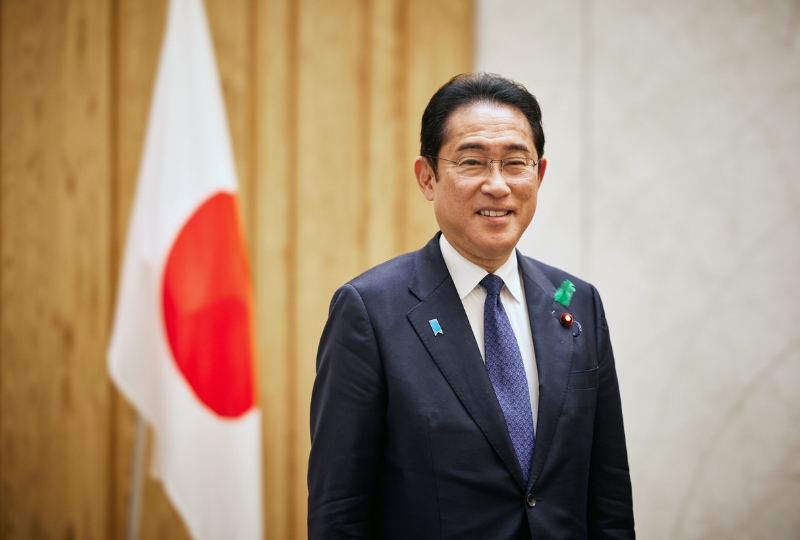
Japan does not have a president; the country is led by a Prime Minister, currently Fumio Kishida. The Prime Minister is the head of government and is responsible for overseeing the executive branch and setting national policy. The Prime Minister is appointed by the National Diet and is typically the leader of the majority party or coalition in the House of Representatives. Fumio Kishida, who has served as Prime Minister since October 2021, leads the government and represents Japan both domestically and internationally.
25. Does it snow in Japan?
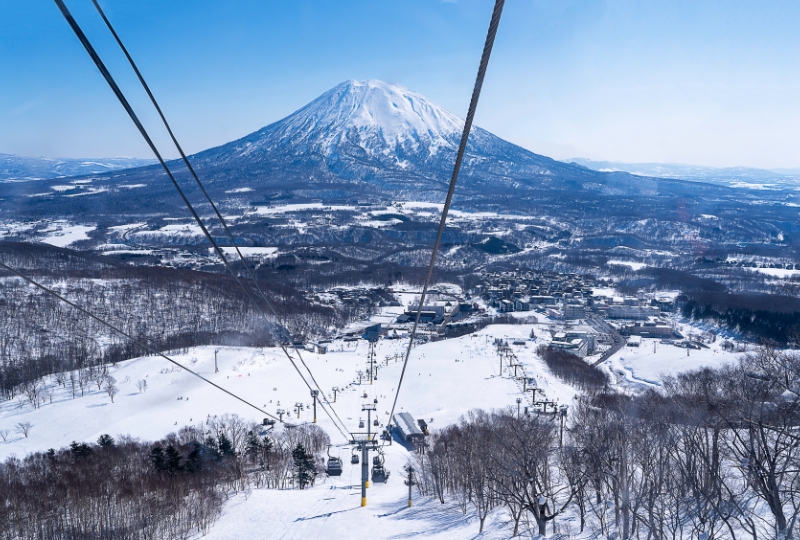
Yes, Japan experiences snow, especially in the northern regions and mountainous areas during the winter. Places like Hokkaido and the Japanese Alps are known for heavy and frequent snowfall, attracting skiers and snowboarders from around the world. Cities like Sapporo and Niseko are famous for their excellent winter sports conditions and high-quality snow. Even in more temperate areas, such as some parts of Honshu, snow can fall, though it is generally less frequent. Snow plays a significant role in Japan’s winter tourism industry and is a hallmark of the season in many regions.
Read more: Niseko Snow Wonderland - Conquering the Serene Snowy Peaks
As this journey of discovering Japan from A to Z comes to a close, you'll find that every question and every answer opens up a new world of exciting surprises. Japan is not only a place where tradition meets modernity, but it’s also an endless exploration of the perfect blend between classical beauty and creative innovation. Hopefully, the information and insights in this article have deepened your appreciation for the Land of the Rising Sun and sparked your passion for exploring Japan even further.
